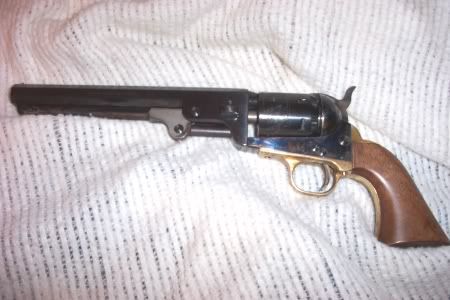After reading the recent tread on the cabela's cap and ball guns I had to get one. All I can say is what a deal! $149.99 for a steel frame 1851 navy in .36
Fit and finish is ok. Trigger guard could have used a little more detail,a couple of machining lines that were left when the polishing was done, and the wood could have bin fitted a little better.
But over all it's a steal at the price.
Took it out and it was a joy to shoot. Just have to remember to take a rag with me to wipe my hands with when I am loading it.
One thing about it is the wedge is a pain to get out. How hard should it be to get it out?
And is dumping all the parts in hot water the best way to clean it? Don't know how much I like putting the frame in water. But I did and then put it in the oven.
Anyway here it is and I love it ::

Lehigh...
Fit and finish is ok. Trigger guard could have used a little more detail,a couple of machining lines that were left when the polishing was done, and the wood could have bin fitted a little better.
But over all it's a steal at the price.
Took it out and it was a joy to shoot. Just have to remember to take a rag with me to wipe my hands with when I am loading it.
One thing about it is the wedge is a pain to get out. How hard should it be to get it out?
And is dumping all the parts in hot water the best way to clean it? Don't know how much I like putting the frame in water. But I did and then put it in the oven.
Anyway here it is and I love it ::

Lehigh...




